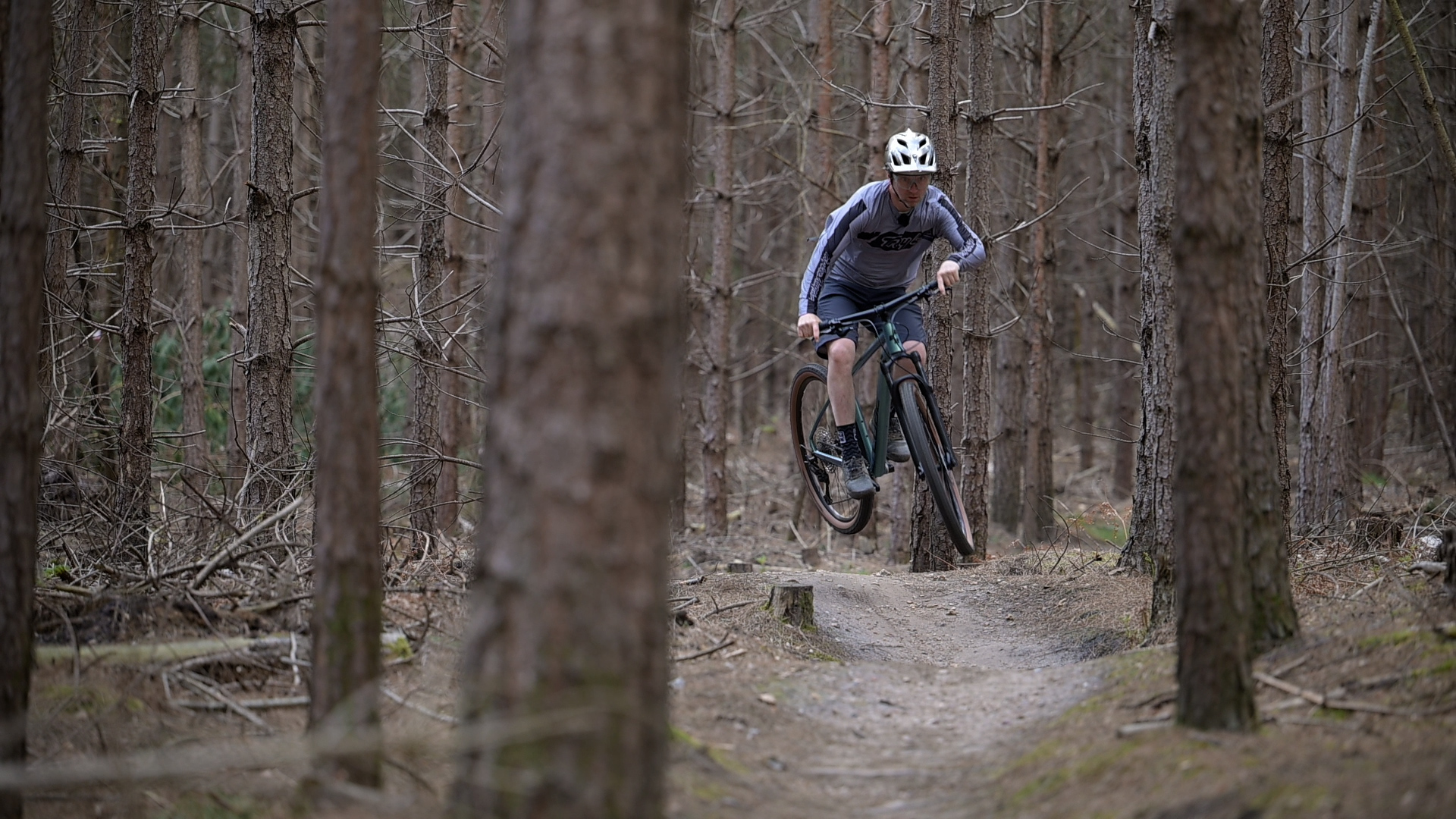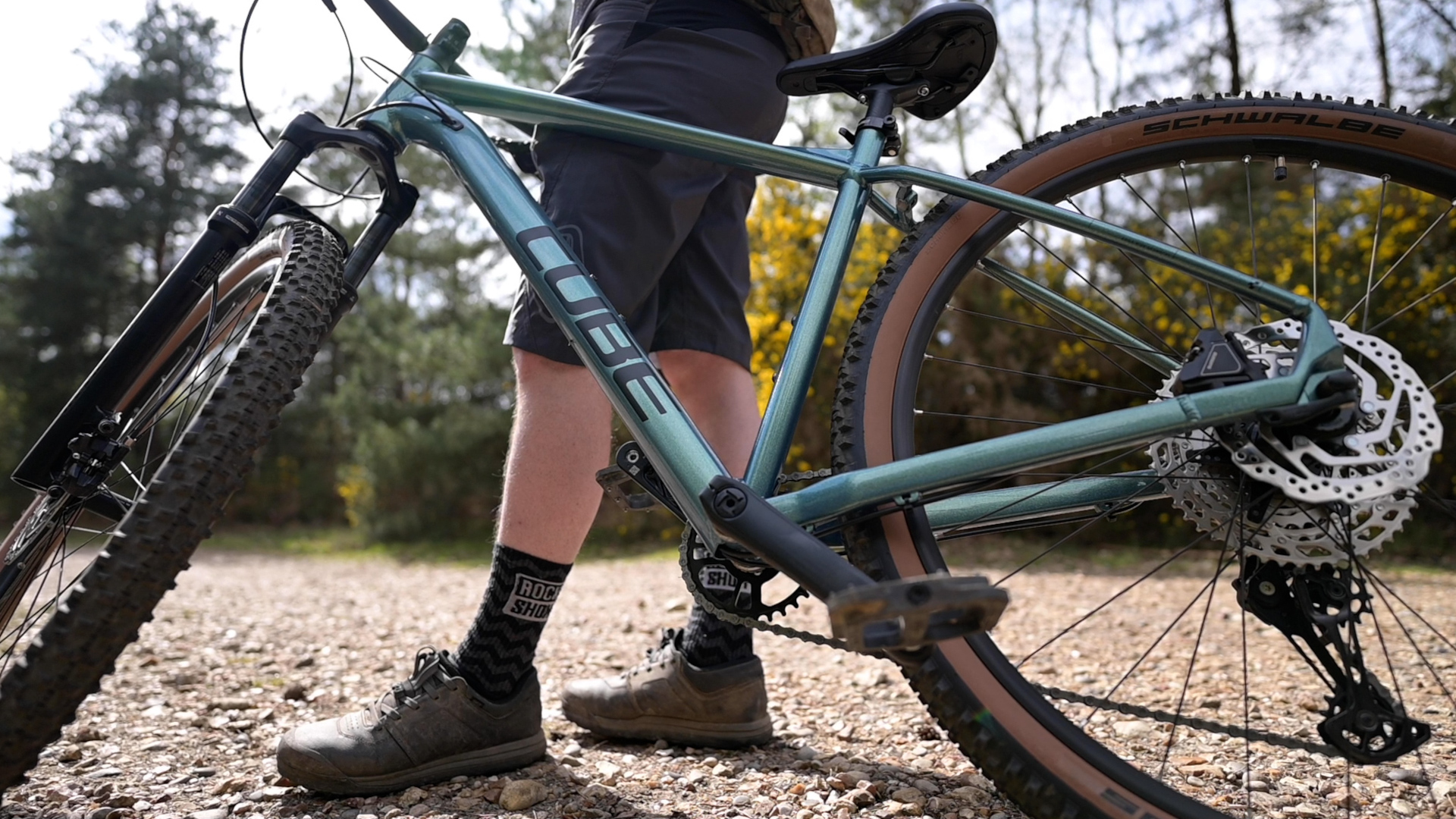10 steps to your first trail centre ride
Fancy tackling a trail centre but don’t know where to start or feel too embarrassed to ask? Just follow these handy pointers for a great day out and the start of a new mountain biking passion…

Fancy tackling a trail centre but don’t know where to start or feel too embarrassed to ask? Just follow these handy pointers for a great day out and the start of a new mountain biking passion…
1. How do I find a trail centre?
The UK has a rich network of brilliantly crafted mountain biking trails, with manmade singletrack to delight and thrill everyone from beginner riders to black run adrenaline junkies. Each trail centre is unique – the biggest and best attract riders from around the world; while others offer amazing biking opportunities on your doorstep.
Find your nearest trail centre at mbr.co.uk
2. What will I find at a trail centre?
Many trail centres will have a bike hire facility, so you can try different bikes and different frame sizes before you commit to buying one. There’s often a shop, too, selling new bikes, spare parts, kit, and with a workshop for bike service and maintenance. And if you’re lucky, there’ll be a café for a cuppa and a slice of cake or bacon sarnie.

3. What do I need to bring?
Mountain biking isn’t a fashion parade; wear loose fitting, comfortable sports clothes that you don’t mind getting a bit muddy. We would strongly recommend padded shorts to protect your vitals (check out our guide to the best shorts here), but the only absolute essential is a decent helmet to protect your bonce and brain. You’ll find our guide to the best mountain bike helmets here.
4. What spare parts should I carry?
Punctures are literally a let-down when you’re biking, so carry a spare inner tube, tyre levers and a pump. Tubeless tyres aren’t 100% reliable, even if they’re filled with puncture sealant, so take a couple of tyre plugs. A multi-tool is handy for any mid-ride adjustments or mishaps, and a spare quick-link for your chain is handy if you’re reasonably competent at bike DIY.

5. How do I keep up my energy levels?
Mountain biking is an energetic sport, so remember to take a drink, either in a bottle or hydration pack, and pack a couple of snacks – cereal bars and flapjacks are good.
6. Backpack or bumbag?
It’s a matter of personal choice – backpacks typically have larger carrying capacity, although you don’t want to burden yourself too much, and will accommodate a hydration bladder for drinking on the fly. Bumbags are neater and sit closer to your centre of gravity.

7. What do the trail colours mean?
Trail centres typically have a map at the trail head of all their routes, graded according to colour (like ski slopes). It’s a smart move to take a photo with your phone of the map before you start, in case you encounter navigation difficulties. Remember, all trails in trail centres are one-way, so pay attention to waymarks to avoid the risk of head-on collisions with other riders.
For your first ride in a new trail centre, we’d recommend starting with a grade below your normal colour, just in case the calibration of difficulty is different to your accustomed routes. As your skill, technique and confidence grow, move up the colour grades.
- Green: This is the easiest trail, largely flat and without any technical features. Start here if you’re a beginner.
- Blue: Expect more elevation change than green trails, plus some technical features, although these should be relatively straightforward and you should be able to roll over all of them.
- Red: These are intermediate trails for more experienced mountain bikers. The trails will be longer and feature more elevation, testing your fitness. Red routes will also have technical features that require calculated speed and precision to negotiate.
- Black: Steep sections, drops and jumps restrict these trails to experienced riders.

8. What should I do in an emergency?
Always carry a mobile phone, and keep an eye out for the marker posts along the trail. These are often numbered, so you can summon assistance to your precise location. Remember, too, that other riders will be passing who can also call for help.
9. What type of bike do I need?
If you’re starting out in mountain biking, look out for a hardtail bike, which means it only has suspension at the front. These are lighter than full-suspension bikes, require less maintenance, and they’re cheaper, too.
The Cube Attention SL is a prime example, with a modern geometry ideally suited to trail riding. The Attention SL comes with robust Shimano gears that combine a single chain ring with a large cassette to provide a great range of gears for everything from fast downhills to steep climbs. Its superb Rockshock suspension can be locked out to save energy on smooth trails and roads (handy if you’re also planning to use the bike for commuting). And the reliable disc brakes and grippy Schwalbe 2.25-inch tyres inspire confidence whatever the surface. Integrated mounting points offer a neat solutions for Cube’s wide range of ACID mudguards and pannier carriers, while the flat disc mount that integrates seamlessly with the kickstand mount showcases the engineering thought and precision in the bike’s design.

10. What are the basic techniques of trail riding?
The rolling terrain of trails means you’ll need to be ready to change gear frequently to maximise your momentum. For smooth, fluid progress, try to look ahead as far as possible, rather than down at your front wheel, so you can spot impending climbs and be ready to change down a gear or two as soon as you need to. With a tasty section of downhill ahead, make sure you have unlocked your suspension and lower the saddle by a few inches to give yourself more room to shift your position on the bike and gain more control. Plus, remember to give yourself a break from time to time to catch your breath, grab a snack and a drink, and maybe take a photo – trail centres can be ruggedly beautiful as well as great fun.
All the latest inspiration, tips and guides to help you plan your next Advnture!
Julia Clarke is a staff writer for Advnture.com and the author of the book Restorative Yoga for Beginners. She loves to explore mountains on foot, bike, skis and belay and then recover on the the yoga mat. Julia graduated with a degree in journalism in 2004 and spent eight years working as a radio presenter in Kansas City, Vermont, Boston and New York City before discovering the joys of the Rocky Mountains. She then detoured west to Colorado and enjoyed 11 years teaching yoga in Vail before returning to her hometown of Glasgow, Scotland in 2020 to focus on family and writing.

